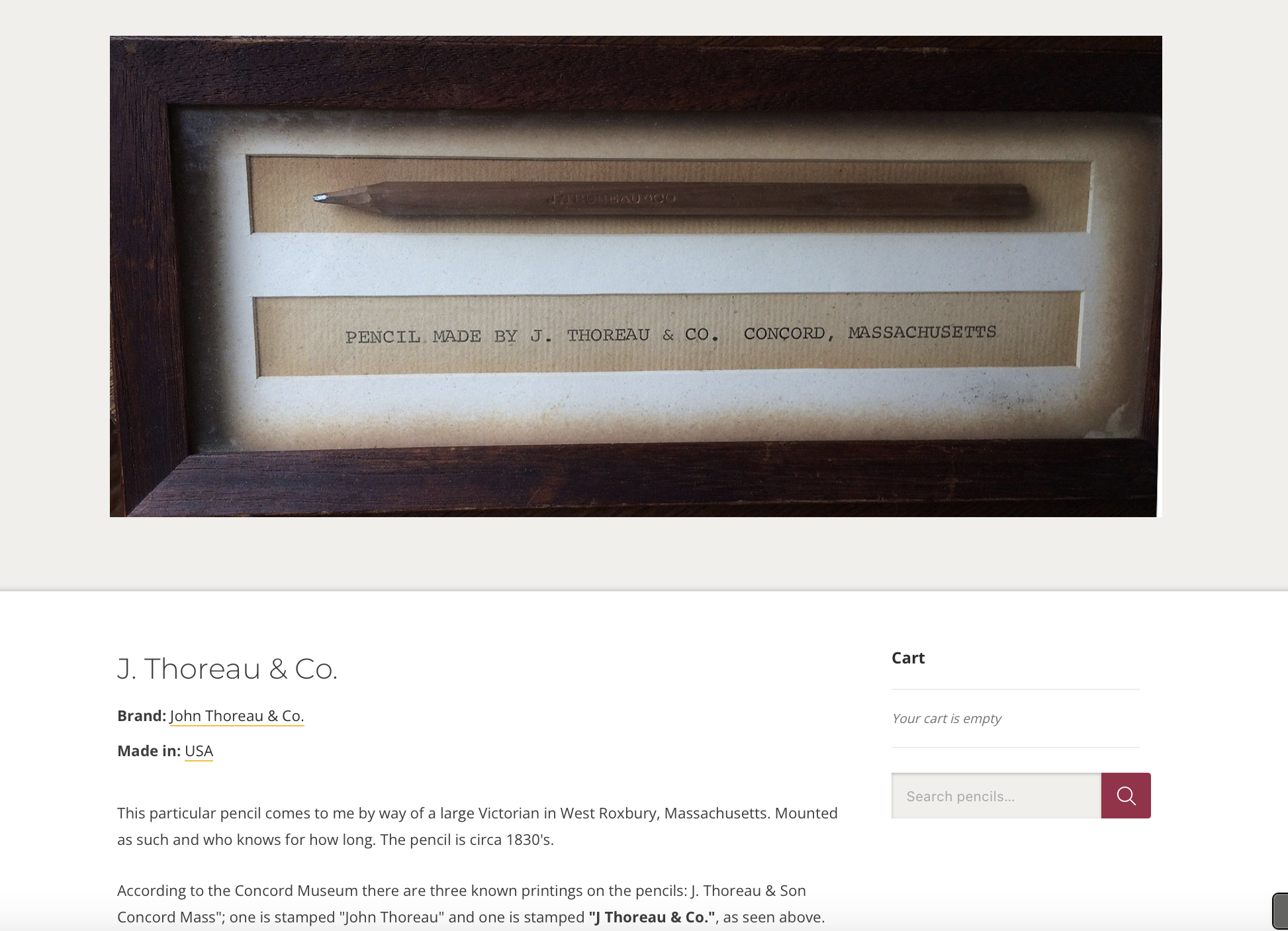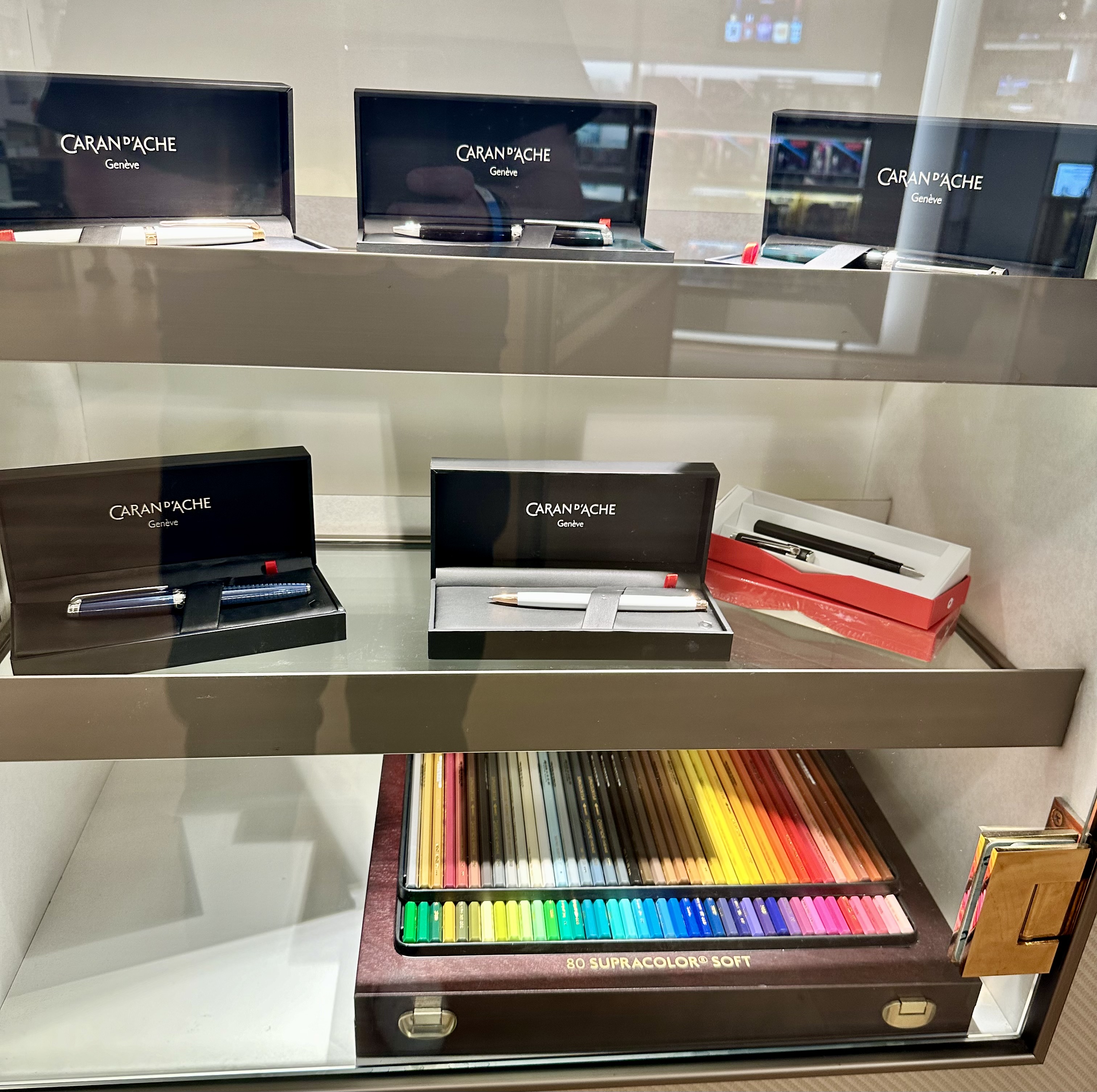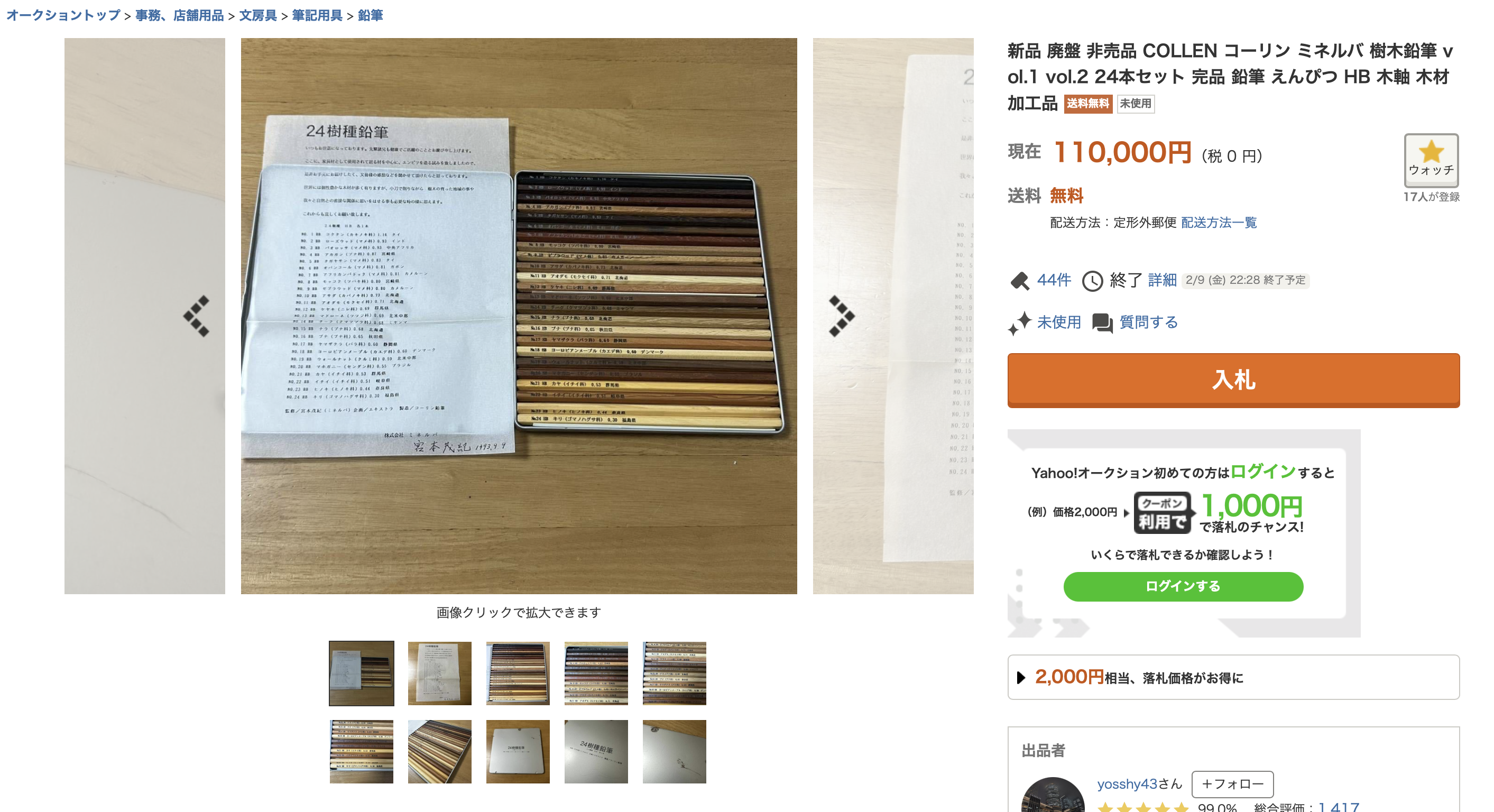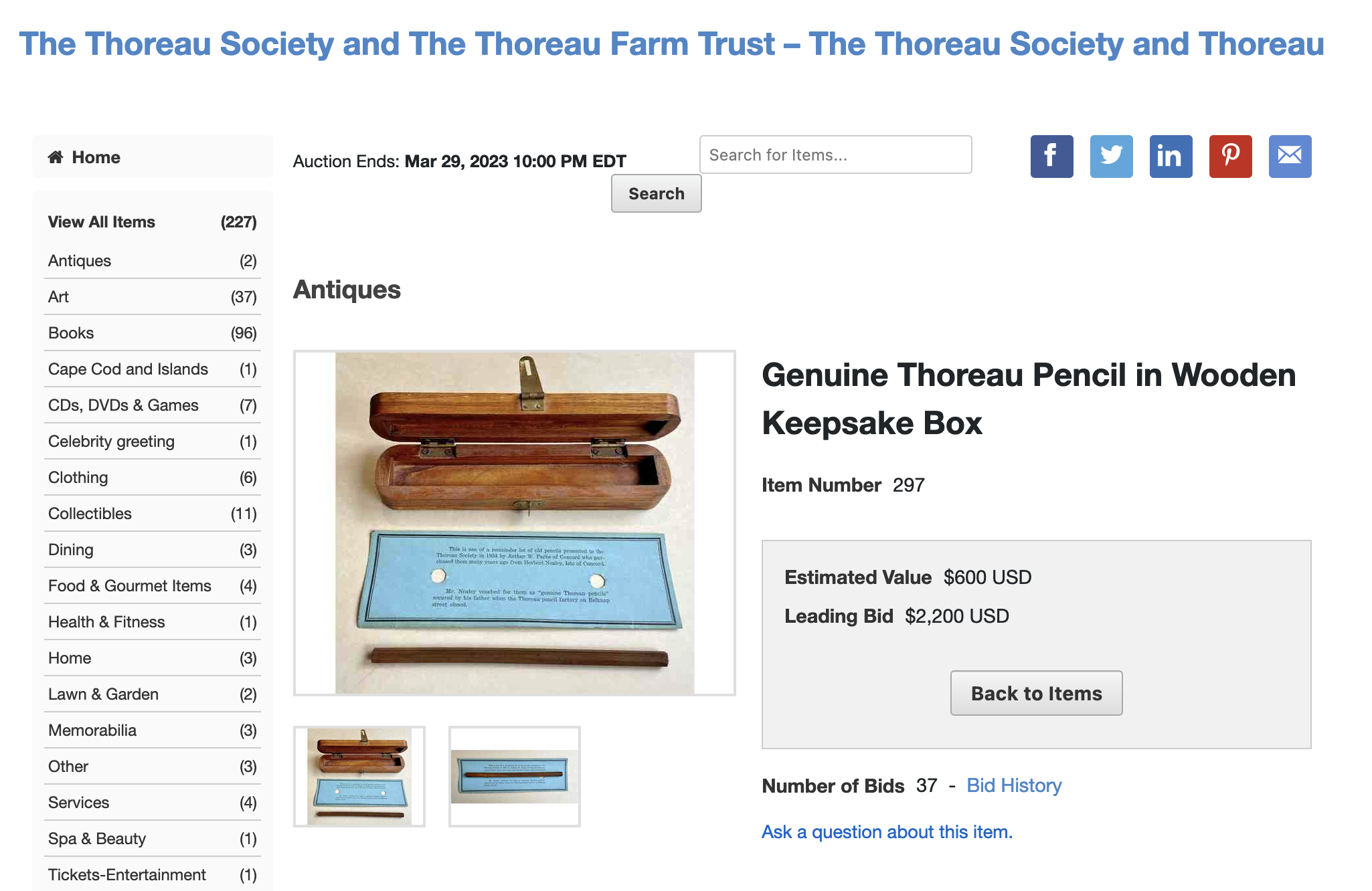Another Thoreau pencil is for sale. This follows an auction by the Thoreau Society earlier in 2023.
This time the seller is online vintage pencil store Brand Name Pencils.

Asking $USD4500 (and the website offers a 10% discount for subscribing to a newsletter), this is roughly double the price of the Thoreau Society pencil.
This pencil has an imprint – “J. Thoreau & Co”, which I believe is highly desirable. But what is lacking are clear photos of that imprint and particularly the end – the lead and joints. I’d also be concerned about how the peculiar storage may have affected the pencil.
I’m sure Bob wouldn’t have bought this pencil if he didn’t believe it to be genuine, but I’d suggest that at this price one might hope for more background. The statement “This particular pencil comes to me by way of a large Victorian in West Roxbury, Massachusetts” had me imagining an older, rotund person.
And an alternate spelling of the name “Henry” doesn’t garner confidence regarding the attention to detail.
Still, an extremely interesting offering.
If you buy this pencil, please let us know.
And a very happy new year to all!





